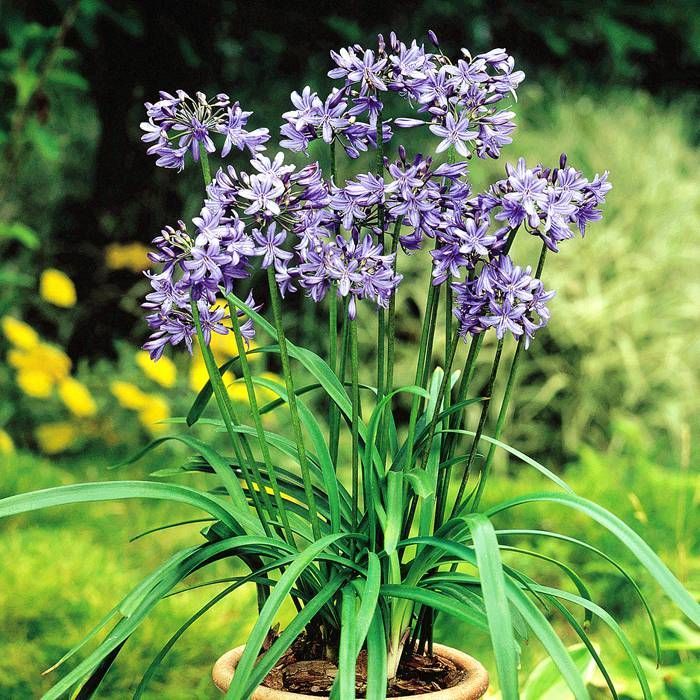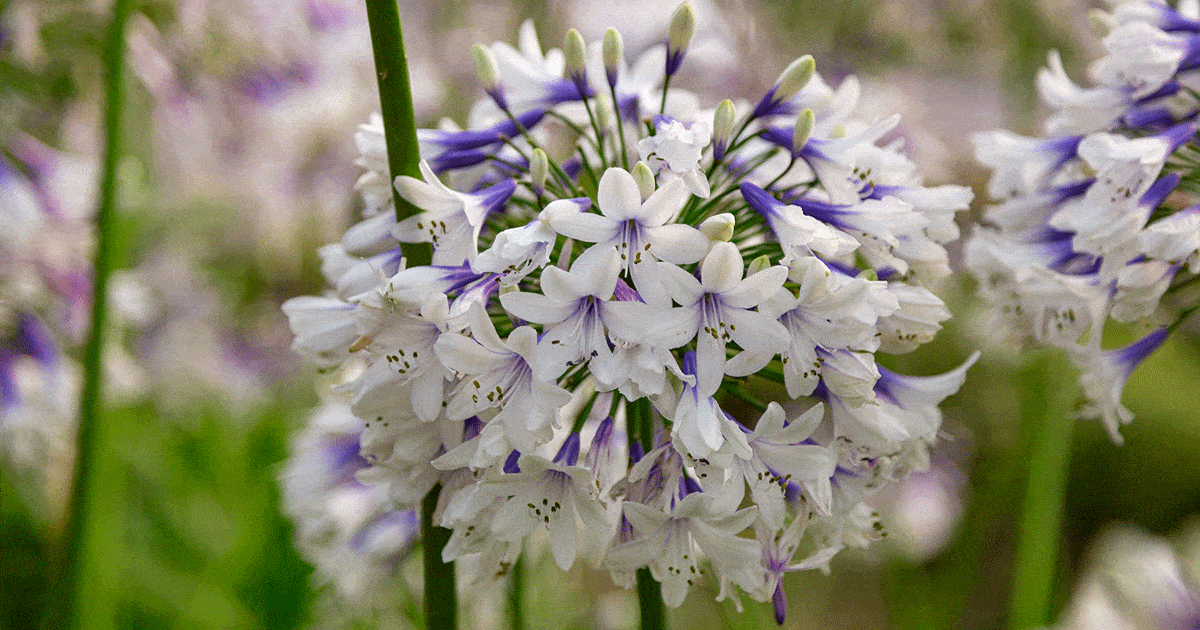Releasing the Secret to Effective Agapanthus Growing: Advice for a Flourishing Garden
In the realm of gardening, cultivating agapanthus efficiently calls for a strategic method that incorporates various aspects of plant treatment. By understanding the nuances of agapanthus growing, one can develop an environment where these plants flourish and flower perfectly.
Planting Agapanthus: Finest Practices
When growing Agapanthus, correct dirt prep work is crucial for ensuring successful growth and advancement of these attractive blossoms. Agapanthus, commonly called Lily of the Nile or African lily, prospers in well-draining dirt with a somewhat acidic to neutral pH degree - Agapanthus. Prior to planting, it is vital to change hefty clay soils with raw material such as garden compost or peat moss to enhance water drainage and supply essential nutrients for the plants
To plant Agapanthus, choose a location that receives full sunlight to partial color, as this will certainly advertise healthy and balanced development and plentiful flowering. Dig a hole twice the size of the plant's origin sphere and put the Agapanthus at the exact same deepness it was formerly growing. Carefully backfill the opening with dirt, pushing down firmly to remove any kind of air pockets around the origins.
Water the newly planted Agapanthus extensively and proceed to maintain the soil evenly moist, especially during the plant's active growing period. Agapanthus. Using a balanced fertilizer once a month can further sustain the plant's growth and flowering. By complying with these best practices for planting Agapanthus, you can create a stunning screen of these fascinating flowers in your garden
Suitable Soil Issues for Agapanthus
For ideal development and flowering success of Agapanthus plants, making sure the soil problems are perfect is critical. Agapanthus likes dirt that is rich in nutrients, so including a balanced fertilizer throughout the growing season can advertise healthy and balanced development and dynamic blossoms.

Watering and Feeding Tips
To make certain healthy growth and dynamic blooms, proper watering and feeding strategies are crucial for effective Agapanthus growing. Agapanthus plants benefit from regular watering, specifically throughout the expanding season.
When it comes to fertilizing Agapanthus, a balanced plant food with equivalent parts nitrogen, phosphorus, and potassium can be applied in the springtime to promote healthy development and blooming. Slow-release fertilizers are perfect for providing nutrients progressively over a prolonged period. Avoid over-fertilizing, as this can bring about extreme foliage development at the cost of blooms.
In addition, integrating raw material like garden compost right into the soil can enhance nutrient degrees and enhance soil framework, helping in the overall wellness of the Agapanthus plants. By complying with these watering and fertilizing pointers, gardeners can guarantee their Agapanthus plants prosper and produce magnificent screens of flowers.
Trimming and Deadheading Techniques
Correct pruning and deadheading techniques play a vital function in keeping the health and wellness and visual appeals of Agapanthus plants, enhancing the vital practices of watering and feeding for effective growing. Trimming Agapanthus involves getting rid of spent blossom heads, yellowing or dead leaves, and total shaping Learn More of the plant to promote far better growth. Deadheading, the process of getting rid of faded blossoms, not just improves the plant's look but likewise urges further flowering.
When deadheading Agapanthus, it is a good idea to trim off the blossom stem at the base using sharp, tidy shears. This procedure reroutes the plant's power from seed manufacturing back into origin and vegetation growth, promoting a healthier and a lot more robust plant. Regular deadheading can prolong the growing duration of Agapanthus and prevent self-seeding, which can bring about overcrowding.
In regards to pruning, Agapanthus normally take advantage of a light trim after flowering to tidy up the plant and urge fresh development. Cutting down the spent flower stems company website and removing any kind of damaged or dead foliage assists keep the plant's vitality and overall appearance. Nevertheless, it is necessary to stay clear of cutting into the crown of the plant, as this can compromise its health and wellness.

Protecting Agapanthus From Pests and Diseases
Implementing effective insect and disease administration techniques is important to securing the wellness and vigor of Agapanthus plants in farming. Agapanthus are usually durable plants, yet they can still drop sufferer to different insects and illness if not properly cared for. One usual parasite that influences Agapanthus is the Agapanthus borer, a caterpillar that passages into the plant, causing damage to the fallen leaves and blossoms. To stop problems, normal assessment of the plants is necessary. If borers are discovered, they can be manually removed, or insecticidal soap can be made use of as a over at this website control procedure.
In addition to parasites, Agapanthus are prone to diseases such as origin rot and fungal leaf spots. These problems can frequently be prevented by making certain appropriate water drainage and preventing overwatering. If signs of illness appear, impacted parts of the plant must be quickly gotten rid of to stop further spread. Fungicides may additionally be used as a therapy measure, complying with the manufacturer's directions meticulously. By staying cautious and dealing with parasite and disease issues immediately, garden enthusiasts can aid their Agapanthus grow and prosper.

Final Thought
Finally, successful growing of agapanthus needs appropriate growing methods, suitable dirt problems, ample watering and feeding, normal trimming and deadheading, and defense from parasites and conditions. By adhering to these methods and pointers, garden enthusiasts can make sure a growing garden filled up with stunning agapanthus flowers. Agapanthus. Remember to maintain regular treatment and interest to detail to promote the health and longevity of these magnificent plants
When growing Agapanthus, proper dirt preparation is vital for guaranteeing successful development and growth of these lovely flowers.Water the newly grown Agapanthus completely and continue to keep the dirt uniformly moist, specifically throughout the plant's active growing period.For ideal development and growing success of Agapanthus plants, making sure the soil problems are perfect is essential. When transplanting or planting Agapanthus, ensure the dirt is well-prepared to supply the essential structure for the plants to establish themselves successfully. One common parasite that impacts Agapanthus is the Agapanthus borer, a caterpillar that tunnels right into the plant, causing damages to the leaves and blossoms.